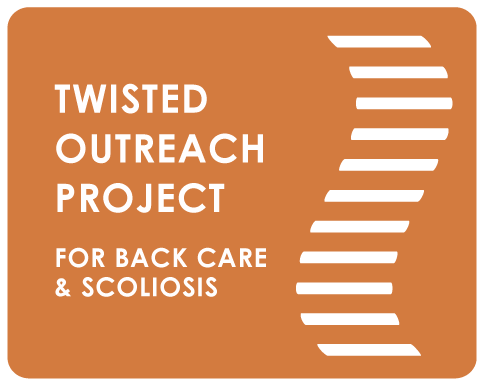Martha Carter Talks About Her Healing Journey - Part 2
This is Part 2 of a serial blog post. In Part 1, I explained how a reiki treatment moved me to want my Harrington rods taken out. Read Part 1 here.
After I made the decision to have my Harrington rods removed, I experienced a huge flood of emotions. I had a flashback to my first surgery. The doctors and my family commenting how “strong” and “brave” I was. How I never cried. How I never complained. How I “just grinned and beared it.” It was like a badge of honour for me, and for them. And because I wanted to dance again, against my doctor’s orders, I carried on with this unrealistic, stoic behaviour for years, regardless of the pain and discomfort I felt. I hid my sadness and frustration from everyone, especially myself.
But now, all these years later, there were suddenly more tears than ever. I couldn’t stop crying, and I knew it was all related. It was as if every tear that I had never shed before was liberated, and it was a huge relief. It occurred to me that my original surgery had not just redirected my spine, but my whole life, and it was time for me to come to terms with all of it.
When I shared the news with my family, something unexpected happened — they became emotional too. For the first time, I realized just how much my surgery and long process of recovery had emotionally strained my family. My mother had to stay home all the time or make sure someone else was with me. They gave up vacations and all of their spare time, to make sure I was comfortable and cared for.
They had given me their all.
Twenty-one years later, my decision to remove the rods was shocking to them. It seemed like I was saying that whole thing had been a waste of time. A big mistake. My siblings questioned me, as did my mother, who then began to question whether surgery had been the right choice all those years ago. At first, I didn’t understand their reactions, but after a few conversations, I came to understand that they were simply nervous, worried, and afraid for me to have another surgery.
As the date of my surgery drew closer, my family’s reaction made me realize that I was taking a huge step towards reclaiming my body. After decades of simply accepting the status quo, I was finally giving myself permission to take control. In doing so it became impossible for me not to listen to my body. This time — this surgery — I was doing it my way.
I made a number of important decisions: I began emotional counselling with a therapist who I also hired to accompany me on the day of the surgery. She was incredibly helpful, and I felt I could be completely open with her without needing to hide my feelings or accommodate hers. I arranged to have a private hospital room so that I could control my environment. Instead of eating the bland and uninspiring meals hospitals are known for, my partner kindly agreed to bring me fresh, healthy food. I also made it very clear to the hospital staff that I would sit, stand and walk on my own time, and held firm to that conviction — in spite of the orderlies trying to get me up before I was ready; before I had even sat up in bed! (Later that evening, I stood up on my own time; in my own way.) And, finally, when my mother offered to travel from home to come help me, I gratefully and gracefully declined, telling her she had already done her part with the first surgery.
These decisions helped heal the unaddressed and mixed emotions that had surrounded my original surgery. Taking control of my body and my experience realigned my understanding of the significance of my scoliosis and empowered me to move forward with new confidence in every way.
In my next post, I share details from the conversations with my surgeon, my experience of the rod removal surgery, and how I found my backbone — in more ways than one.
Disclaimer: This serial blog details my own personal experience related to scoliosis surgery in 1974 and Harrington rod removal in 1995. Please note that the times and treatments have changed, and not all patients have the same experience or results. Be sure to carefully consider your own surgical treatment decisions, given the current context, and with all information available. Visit our Back Care page for a review of medical and supportive care options.
